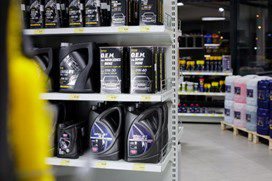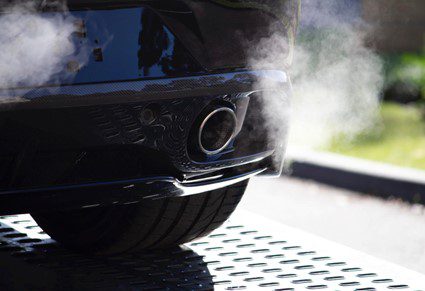Euro 7 impacts on engines
Euro 7 impacts on engines – The proposed Euro 7 European Vehicle Emissions Standard was published on November 10, 2022, following rigorous debate. While the new standard is not yet in its final form, there is little scope for alterations, suggests Keith Howard, strategic technology manager at Lubrizol based in Derby, UK. The discussion has now shifted to how it will be implemented, as opposed to what the limits are, he says.
Howard’s comments were made during the Lubrizol360 webinar Euro 7: The Next Chapter in European Vehicle Emissions Regulations on January 25, 2023. The webinar, part of a regular series by the U.S.-based fuel and lubricant additive manufacturer that addresses market trends and lubrication challenges, featured presentations from Howard and Mark Dewey, strategic technology manager, on the implications for engine hardware, fuel and engine solutions.
Dewey is a chartered engineer with the Institution of Mechanical Engineers and over the past 10 years has worked in Lubrizol’s mechanical testing department specialising in fuel efficiency and emissions testing. Howard, an automotive engineer by background, has spent 29 years at Lubrizol in a range of roles covering engine oil development and approval, testing and original equipment manufacturer (OEM) related activities. Howard is a chartered engineer and a Fellow of the UK Institution of Mechanical Engineers.
The goal of Europe’s future emissions legislation is to improve urban air quality. In the age of increasing electrification, legislators are setting the next generation of regulations as close to zero tailpipe emissions as possible.
Euro 7 mandates ultra-low emissions levels
Euro 7 mandates ultra-low emissions levels that cover an increasing range of pollutants and requires vehicles to remain clean under all operating conditions. Euro 6 included separate limits for port fuel injection, gasoline fuel injection (GDI) and diesel engines. The new standard employs a technology-neutral approach with a harmonised limit for all vehicles across the full “useful life” of the vehicle. More stringent durability requirements extend the useful life of vehicles, which will prompt greater in-use monitoring.
Particulate emissions generated by brakes and microplastics production due to tire wear are also captured in Euro 7. These rules apply to all vehicles, including electric. Although, the Lubrizol360 webinar focused solely on fuel and lubricant issues related to tailpipe emissions. OEMs will develop a range of solutions that will impact fuels and lubricants, says Howard.
Howard outlined the implications of Euro 7 on the engine and aftertreatment hardware in light-duty vehicles.
GDI will continue to be the core light-duty technology for the gasoline fleet in a post-Euro 7 world. Technology neutrality means that gasoline particulate filters (GPFs) will become universal, says Howard. Particulate filters typically improve with age as captured particles enhance filtration. Though, with particulate limits dropping from PN23 (Particulate Number) to PN10, there is a need for greater efficiency and a higher level of filtration from the start, he says.
 Controlling oxides of nitrogen (NOx) will be the key in diesel engines, particularly low-temperature NOx. Howard outlined a potential need for close coupling and electrical heating of NOx reduction catalysts—making them more vulnerable to contamination. Positioning NOx reduction catalysts close to a turbocharger outlet can expose them to hot gasses with contaminants from lubricants that can poison the catalyst, he says.
Controlling oxides of nitrogen (NOx) will be the key in diesel engines, particularly low-temperature NOx. Howard outlined a potential need for close coupling and electrical heating of NOx reduction catalysts—making them more vulnerable to contamination. Positioning NOx reduction catalysts close to a turbocharger outlet can expose them to hot gasses with contaminants from lubricants that can poison the catalyst, he says.
Particulate control during diesel particulate filter (DPF) regeneration could also be significant. Filter regeneration was not previously considered in testing. Now it will be, says Howard. Regeneration occurs when soot that has been collected needs to be burned off. An injection of additional fuel may be required to raise the exhaust temperature to burn the soot—which can produce a spike in emissions. This additional requirement could impact filter design, he says.
The Lubrizol representative also highlighted an increasing hybridisation for all engine types as a key consideration for Euro 7.
Greater system complexity
During the webinar, Dewey emphasised greater system complexity in heavy-duty hardware to meet Euro 7 requirements. Like the light-duty fleet, close coupling of selective catalytic reduction (SCR) may be required for NOx control and improvements in DPFs will aid regeneration.
Dewey also noted potential changes to regeneration strategies. Not everything can come from aftertreatment to achieve Euro 7, he says. Hardware changes may be required to reduce engine out emissions—getting engines to their operating temperature quicker and sitting at a more efficient temperature for longer. Cylinder deactivation may become more prevalent in a heavy-duty environment, he says. With the addition of Advanced Onboard Monitoring (OBM) systems, OEMs will be monitoring larger sets of data to ensure they are staying within the requirements of Euro 7.
Employing the correct lubricant throughout a vehicle’s entire lifetime is also important, says Dewey. Engine oils can have a significant impact on particulates, with manufacturers needing to focus on PN reduction in engine oil formulations. Lubricants with high ash can block filters, create back pressure and result in higher fuel consumption, he says. 
Phosphorus and sulphur from lubricants can poison catalytic coating in aftertreatment systems—affecting the chemical reaction that changes pollutants to less harmful substances. With the arrival of onboard monitoring, there are a lot more sensors in the aftertreatment, each monitoring a different pollutant. Incorrect oil use could lead to contamination of the sensors and incorrect emissions readings.
A fuel-related shift may also occur off the back of Euro 7. Poor quality fuels can lead to fouling of fuel injector nozzles—which affects injector performance and spray patterns. Deposit buildup can increase injection duration, subsequent fuel use and can impact combustion timings. High-quality fuels that maintain the cleanliness of injectors will be required.
High-quality fuels and oils
Dewey outlined several other considerations for fuels and lubricants in Euro 7 outside of PN improvements—including the significance of fuel economy improvements. High-quality fuels and lubricants improve fuel consumption—with a more efficient engine reducing emissions output. Fuel compatibility is vital to ensure optimal cleanliness.
Poor quality fuel and oil can also contain several precursors for low-speed pre-ignition (LSPI), especially in GDI engines, he says. The use of high-quality fuels and oils will mitigate the risk of LSPI-related abnormal combustion events.
The anticipated increase in hybridisation in light-duty vehicles will result in significant changes to the duty cycle and operating conditions of an engine. An internal combustion engine may spend a lot of time off under electrical power or operating at lower temperatures. This can induce corrosive properties into the engine due to condensation, says Dewey. This can be countered with high-quality lubricants, he says.
Dewey also emphasised the importance of deposit control to avoid piston ring deposits and sludge that may impact the internal friction and performance of the engine. Wear protection properties are also vital for Euro 7 vehicles to ensure the engine is protected from wear for the lifetime of the vehicle.










